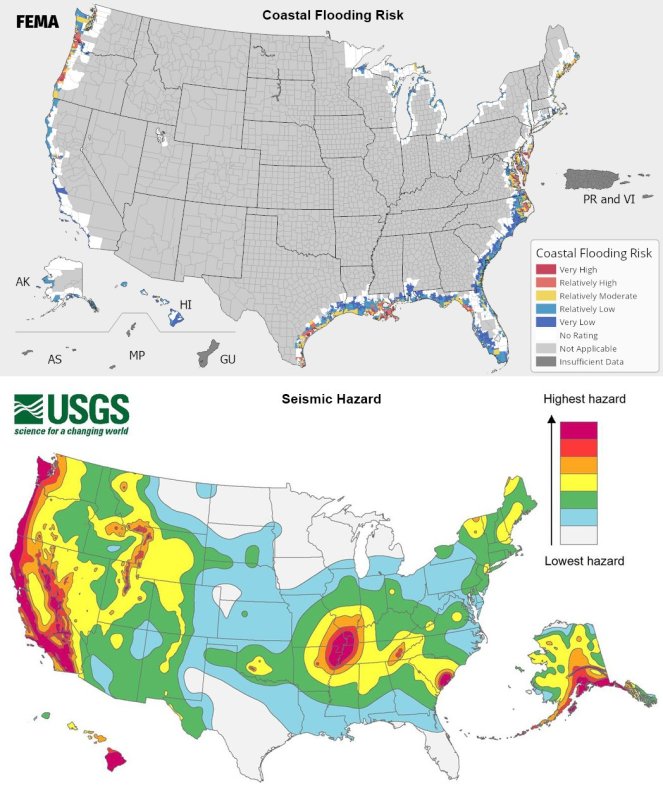WWU’s Rebekah Paci-Green Awarded New NSF Grant to Study Sea-Level Resilience in the Face of Climate Change and Natural Disasters
BELLINGHAM, WA – Salt corrodes buildings. Earthquakes shake them. What happens when an earthquake hits a building already damaged by saltwater?
To answer that question, the National Science Foundation awarded a team of researchers from Western Washington University, the University at Buffalo (UB), and the University of Hawai’i at Mānoa, $2.7 million over five years to assess such risks in Hawai’i and other regions with low-lying coastal infrastructure.
The issue is especially salient in the context of climate change. “Well before communities are submerged by rising sea levels, they’ll experience new levels of coastal flooding during winter storms, king tides, and hurricanes,” said project co-principal investigator Rebekah Paci-Green, associate professor and chair in the Department of Environmental Studies at Western Washington University. “These short-term inundations can expose buildings to saltwater deterioration.”
“A lot of research has been done on seismicity and salt corrosion separately,” said project principal investigator Pinar Okumus, associate professor in the University at Buffalo Department of Civil, Structural and Environmental Engineering. “But very little has been done on how earthquakes affect buildings already damaged by saltwater.”
Additional co-principal investigators include Oceana Francis, professor in the Department of Civil, Environmental, and Construction Engineering at the University of Hawai'i at Mānoa; and Negar Elhami-Khorasani and Ravi Ranade, both associate professors in the University at Buffalo’s Department of Civil, Structural and Environmental Engineering.
Applying discoveries to Hawai'i
The project will involve the use of “test beds,” which are a way to apply the research findings to a site to demonstrate the potential impact on that site. The site can be a real place or a virtual city that can be modified to represent features specific to selected areas.
Hilo, a low-lying coastal city on the island of Hawai'i with a population of about 45,000 people, will be one of the test beds. A 5.0 magnitude earthquake occurred nearby in 2022.
“Hilo faces both earthquake and salt corrosion issues today,” says Paci-Green, “but this issue is also critical for coastal towns in Washington, Oregon, California, Alaska, and beyond.”
Researchers at the University at Buffalo will model how saltwater-induced corrosion weakens buildings that may then experience earthquakes and the protectiveness of several mitigation options.
“It might be as simple and inexpensive as painting a steel column or more complicated, like adding new structural material,” says Okumus.
Meanwhile, Paci-Green and a team of WWU graduate students will examine Hilo residents' risk perception and mitigation preferences.
“Even if we can find a great technical solution, it’s useless if residents aren’t interested or if local planning and policy frameworks don’t support it,” said Paci-Green. “We need to find mitigation solutions that are technically, socially, and financially viable.”
The second test bed will be virtual, based on a model developed by the National Institute of Standards and Technology, said Okumus.
“This means that our findings can be useful to people in any city, including those in the Pacific Northwest, Puerto Rico, and elsewhere,” Okumus said.
Outreach to local communities
In addition to doctoral students, postdoctoral researchers, and master’s students, the team also includes Washington State’s Hazards and Outreach Program Supervisor, Maximillian Dixon.
“One of the key stakeholder groups here is local emergency managers and planners,” says Paci-Green. “Having Maximillian working with us will make sure we’re getting results to the people most connected to at-risk coastal communities.”
Okumus and Paci-Green expect to do joint research publications with collaborators throughout the project.
“We want to make sure our results are not going to sit on a shelf,” says Okumus. “I do expect challenges, but you can’t do exciting things without challenges.”
Media Contacts:
Mary Durlak, University at Buffalo, ub-news@buffalo.edu
Rebekah Paci-Green, WWU, greenr21@wwu.edu

